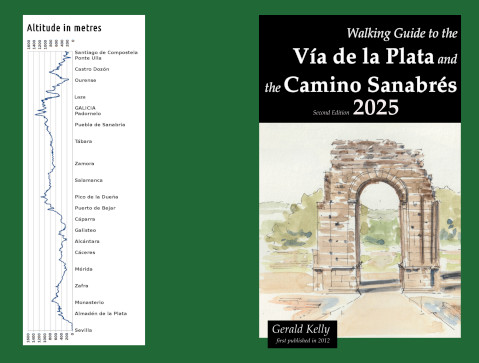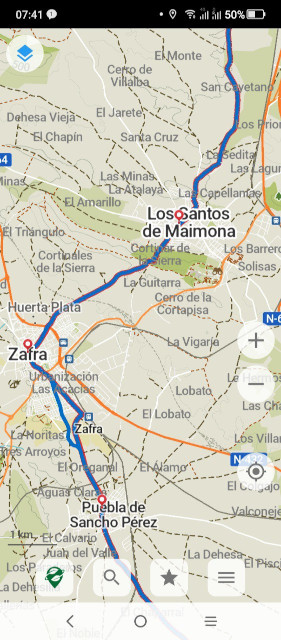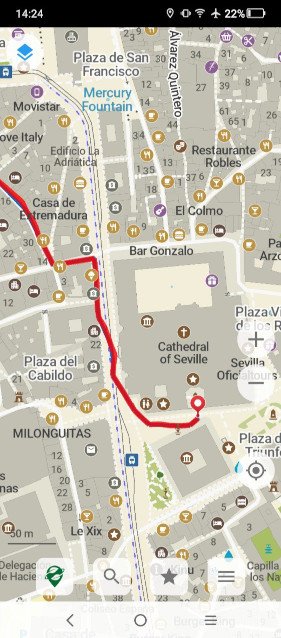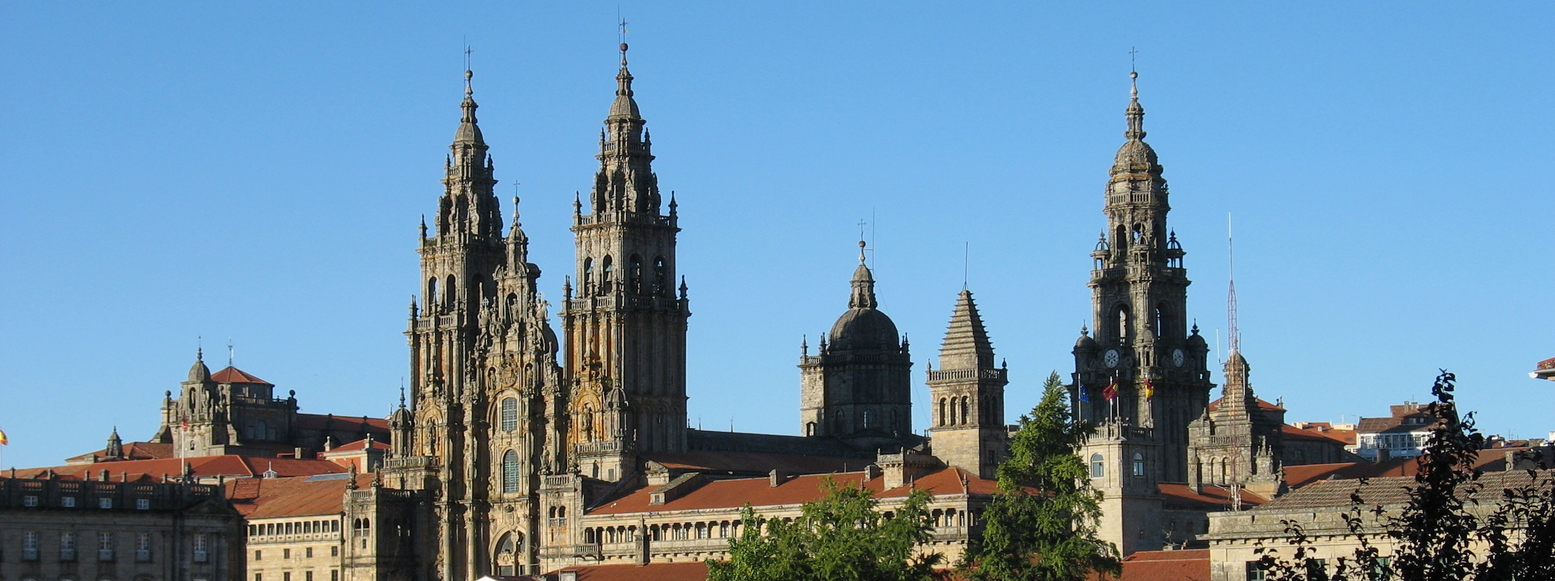Walking Guide to the Vía de la Plata
The guide covers the Vía de la Plata and the Camino Sanabrés, from Seville to Santiago de Compostela. It was first published in 2012 as a free download from our website and it's been going strong every since. It's updated every year to take account of changes along the Camino.
It was last updated in autumn 2025.
The free / donativo guide to download
The guide is given to you for free. If you find it useful you can make a donation.
It has all the information you need to walk the Vía de la Plata in the traditional way, staying in traditional pilgrim hostels.
The full guide to download
The 2026 edition of the full guide will be available in December 2025.
When you donate you can download the full Walking Guide to the Vía de la Plata as a PDF and get access to various other useful resources.
If you'd like to download a sample click / tap here for the first 20 pages.

What you get when you donate...
The full Walking Guide to the Vía de la Plata to download as a PDF. It has the following:
- A comprehensive guide to pilgrim accommodation
- Information about facilities such as shops, cafés and restaurants
- Urban maps of towns and cities and detailed maps of the Vía in rural areas
- Route descriptions focusing on places where confusion is possible
- Information about historic sites along the Camino's route
- Recomendations of great places to eat
GPX tracks to the whole Vía de la Plata and its variants. These tracks were made by Gerald Kelly while walking and last updated in 2024 to take account of various route changes. The tracks are compatible with the open source offline mapping app Organic Maps on Android and iPhone smartphones. They also work on Google Earth on a smartphone or a desktop computer.

It can zoom in to show street-level detail.

Practical Preparation and Background
As well as that you can download a PDF copy of our definitive guide to preparing for the Camino. It hasn't been updated since 2021 but the information is still relevant (just ignore any mentions of COVID).
You'll get the following.
- Packing: what to bring and (all importantly) what not to bring
- Health and safety: how to avoid, or if necessary, deal with blisters, bedbugs, heatstroke and other hazards
- What to expect on “the Way”: What's a typical Camino day?
- Communicating: with useful words and phrases in Spanish?
- History of the Camino and of Spain: what was the Camino like in the middle ages?
To download a sample of our comprehensive guide to preparing for the Camino, just click here!
The guide as a printed book
If you'd prefer to buy a printed copy you can get one directly from us.
The guide is also available printed or as an ebook for Kindle from Amazon:
Walking Guide to the Vía de la Plata
Amazon links for the following countries:
Australia
Canada
Germany
Italy
Spain
United Kingdom
United States of American
(if you can't see the link above you probably need to disable your ad blocker for this site)
To see all the formats the guide is available in go HERE.
The Walking Guide to the Vía de la Plata is also available as an app on Android and Apple (iPhone) mobile phones. For links to the apps see here.
Please support our work
We've been providing free guides to Camino pilgrims since 2012 and updating them every year. This is part of our commitment to supporting the Camino community.
This all costs time and money.
If you've used our free resources and you'd like to help us financially and ensure that we'll still be able to provide this service in the future you can do so in several ways.
1 - Donate
If you found these resources useful and you'd like to support our work so that we can continue supporting pilgrims on the Camino de Santiago in years to come then please consider making a small donativo: CLICK HERE TO DONATE
When you donate you'll be able to download the full guide in PDF format as well as GPS tracks for the whole route which I created while walking and which are updated every year to reflect latest route changes.
2 - Use our Booking.com links
When you use our Booking.com links, either from one of the apps or from the online guide, we earn a commission for every night you stay. It's a win-win, it costs you nothing, the Camino Guide benefits, and a major muntinational company loses some money (that should probably be "win-win-win")
We've organised our booking tool so it's easy to see what accommodation is available along the Camino. Have a look by clicking here Vía de la Plata and the Camino Francés.
3 - Use our Amazon links
By using our Amazon affiliate link. Every time you go to an Amazon website using this link we get a small percentage from every purchase you make. Click here to go to Amazon USA and here to go to Amazon UK. (Sorry, we don't have them for other countries)
The Amazon links on our Packing Page also earn us a commission on any purchases you make. This is the PACKING PAGE.
Just to be clear, we get money and it costs you NOTHING!
4 - Spread the word
All you have to do is share a link to our website wherever you're active on social media.
You can help us greatly by telling other pilgrims about the services we offer!
A short rant...
The Caminos have become increasingly commercialised in recent years with many companies offering package deals for exorbitant prices.
On this website we try to offer an alternative to all the money-grubbing by giving people impartial information for free and telling them that it's perfectly possible to walk the Camino independently, staying in modest pilgrim accommodation, without the help of tour companies, luggage transfers and taxis.
In fact, if you want the experience of walking a Camino then the best way to do it is still to put your bag on your back and start walking and trust to the Camino that it'll take care of you (as people have been doing for almost a thousand years).
Thanks! Gracias! Merci! Danke! Hvala! Buíochas! Merci!
And Buen Camino!
Gerald Kelly

All the links...
Copyright © Gerald Kelly 2025. All text and photos.